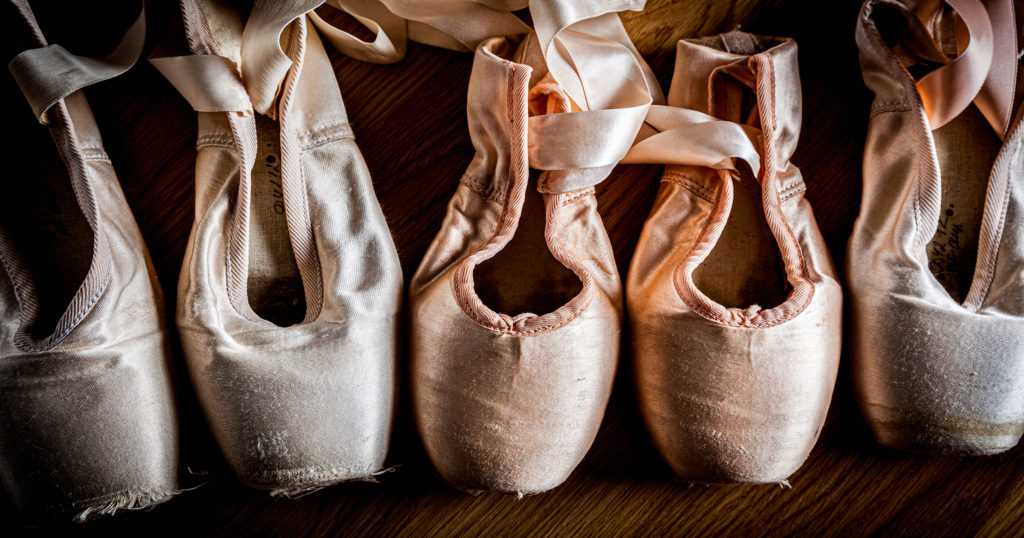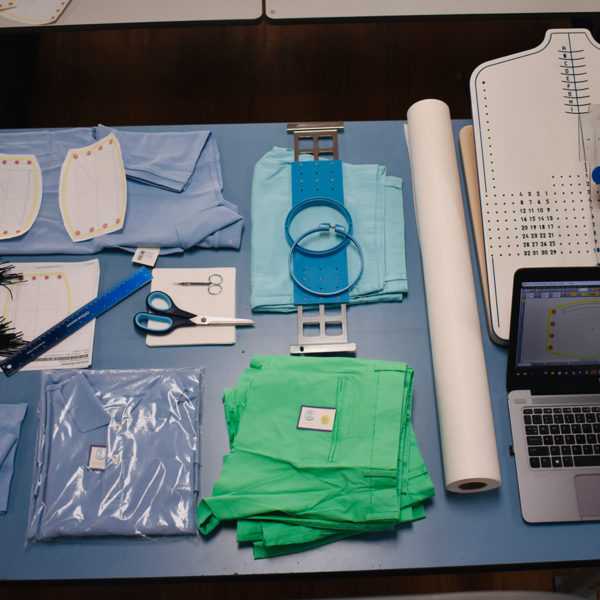In These (Brown) Shoes: Throwing Shade at Ballet


For Dana McCaw, a now-retired ballerina, memories of her dance years present a sometimes wistful and bittersweet tapestry. As a biracial girl growing up in ‘80s suburban New Jersey, she first bellied up to the barre at the tender age of two and was hooked from the beginning. She went on pointe at around age 12, and back then, the company dress code followed the standard most ballerinas know very well: pink tights and pink satin toe shoes.


Pink tights, says McCaw, were created to resemble fair skin, which in turn was representative of what most dancers looked like. “It was supposed to be a continuation of the line of the arms and the head and the neck and everything [else,]” she says. But, “if you are a dancer of color, the line was discontinued [because] your head, neck, and arms were a different color than your legs.”
Ballet is an art form that often prizes continuity, elegance, and grace, courtesy of uniform costumes and poses. Movements are long and lean, and performed by the corps de ballet in tandem. The purpose of the ensemble is to continue the line and not break it, and for dancers of color, in the past, that has often meant donning pink toe shoes, which don’t match, let alone acknowledge, their rich pigment at all. But don’t let the uniform (or its appearance therein) fool you.
Biscuits, Croissants, and a Whole Lotta Dough
Pointe shoes enable dancers to perform longer, more intricate movements solely on their toes. Their design allows for a transfer of weight, which provides dancers with the necessary support toe dancing commands. They are a necessity that come at luxury prices. A pair of good-quality shoes will easily run upward of $75, and professional dancers can go through a pair in 10 to 15 hours. The fit and flex of the shoe depends on the shape of the dancer’s foot – an issue that McCaw and a friend turned into a slightly dark inside joke about feet forms called “biscuits or croissants.”
“[Pointe shoes] don’t last very long,” says McCaw. “It depends on your body and if you have very flexible [croissant-like] feet with high arches or as they like to say ‘pretty feet.’” But whether a pointe dancer sports croissant feet or biscuit feet, the fact remains that dancers don’t get paid that much to support the shoe habit. According to Data USA, in 2018, 67% of dancers and choreographers were white, while 79.6% were female. Meanwhile, the average salary was $28,828, but for women, it was $25,312, making it understandable that when a ballerina invests in a shoe, they’re on the prowl for something that makes them look great and feel represented.
Bridging the Representation Gap
Consumer demand for products that truly match or represent their skin tone has always existed, but true shade variety has become more mainstream over the past handful of years. One only needs to consider pop icon Rihanna’s 40-shade Fenty Beauty makeup line, which debuted in 2017. Within a little more than a month on the market, Fenty Beauty reportedly made $100 million in sales. Influencer Kim Kardashian West’s first collection of SKIMS “Solutionswear,” marketed as inclusive shapewear for its variety of sizes and shades to match different skin tones, sold out in minutes in 2019.
Other products are following suit. While some companies, such as Fenty and lingerie maker Nubian Skin, were founded on the idea of inclusivity, mainstream companies are catching up, thanks to what marketers call “the Fenty effect.” Products as diverse as bandages, shoes, sunglasses, handbags, and crayons are being manufactured in a rich variety of shades to give new meaning to “nude.”
While more niche-specific, a similar demand for toe shoes in shades beyond the pale was inevitable. Dancers of all backgrounds and shades have long cemented their places in the front row center, even if the products weren’t there. When McCaw began working with Mitchell’s Dance Theatre of Harlem, Mitchell took a different skin tone approach.
“[Mr. Mitchell] felt that the [dancer’s] line should be continuous,” she says. “You would wear tights that would be closest to your skin tone, and you would also dye your shoes to be as close to possible as your skin tone.” To do this, McCaw says, dancers would often dye their pink satin shoes using oil-based foundation, a technique some refer to as the “pancake.”
The pointe shoe market finally caught up – long after McCaw hung up her dancing shoes. In 2018, artisanal dance-shoe maker Freed of London made headlines when it unveiled Aspire, a line of pointe shoes that come in four different shades of brown, putting customization slightly further within reach. Freed also announced a line of tights that aim to blend better with a variety of flesh tones.
Since then, dancers’ enthusiasm for shoes and tights that represent more than one shade has grown. Consider the now-viral TikTok video of University of Oklahoma student Kira Robinson, an 18-year-old African-American ballerina unboxing pointe shoes that match her skin tone. Robinson’s response in the video landed her in an interview with Good Morning America, where she spoke a truth that every Dana McCaw, Misty Copeland, and countless others understand.
“I’ve been wearing pink ones ever since I was a young girl, but when I heard they were creating brown ones, I couldn’t believe it,” she said. “I knew I had to grab a pair.”
Offering up brown toe shoes and tights signals that a new level of attention is being paid to diversity and representation in classical ballet, believes McCaw “Companies are trying to step up and say, ‘We have something,’” she says. “If you make four shades of pointes, that’s not necessarily going to catch everybody, but it’s a good effort.”

